
Before the huge popularity of salicylic acid, benzoyl peroxide et al., there was one ingredient that was in all skincare for acne-prone skin – witch hazel. In our latest skincare Ingredient Spotlight we explain what it does to the skin, how to use it, and what to avoid
JUMP TO SECTION
Click the links below to jump to the relevant section:
Witch hazel is one of those ingredients that appears to help nearly every skincare problem.
It’s a natural skin healer and cleanser, which works well with other ingredients.
It’s used to treat oily skin because it removes excess oil.
It reduces inflammation, soothes irritation, fights signs of ageing, and tackles blemishes.
It’s why, in the 1990s before the skincare market exploded, witch hazel was found in almost every product.
In recent years, it’s fallen out of favour for the likes of salicylic acid, benzoyl peroxide, and more.
It’s also not as prevalent anymore because its usage comes with a couple of caveats – and overuse can bring more problems than solutions – but it still has its uses.
Here we explain what they are and how to get started with the ingredient in our latest Ingredient Spotlight.
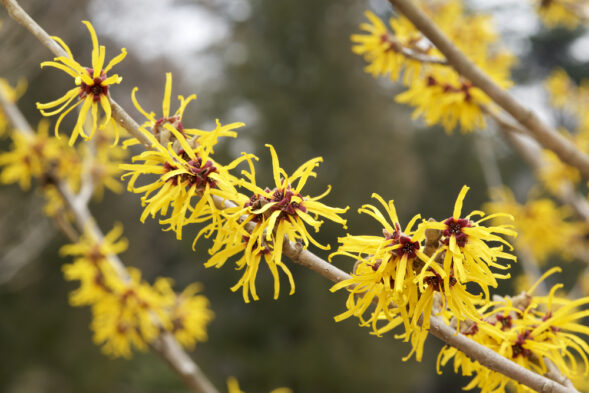 Shutterstock
Shutterstock Witch hazel is a plant, or more specifically a shrub officially known as Hamamelis. It has yellow, orange, or red flowers and smells almost spicy. The bark, leaves, and twigs of this shrub are then used to make medicine.
It gets its slightly odd name from the Old English word: “wice” or “wiche” which means pliant or bendable. Over the centuries, it’s been used to treat a variety of ailments and a growing body of research has identified it as a source of many antioxidants and molecules that benefit your health, and your skin. Such as tannins.
You may have heard of tannins in wine but when these compounds are applied to the skin, they can help balance oil and, in turn, minimise the appearance of enlarged pores.
Witch hazel is available as an extract by itself, but you will also find it in skincare products, such as cleansers, toners, astringents (shrinks skin tissue to make pores less visible), lotions, and moisturisers.
FURTHER READING: The hard truth about pores and why you can’t shrink or minimise them – no matter what skincare brands claim
Witch hazel has many benefits and uses. It can be used for the following ailments:
WITCH HAZEL SIDE EFFECTS
Although witch hazel may sound like the cure for everything, it’s important to remember that long-term use of witch hazel can cause skin problems.
When you apply alcohol or other strong astringents to your skin, it can end up damaging your skin barrier. As a result, witch hazel side effects include skin irritation and dryness – two signs that the barrier is compromised.
It’s better to use witch hazel in short bursts, as and when you need it, or opt for alcohol-free products that are gentler on your skin.
If you’re a long-term sufferer of acne, you may find azelaic acid or benzoyl peroxide is a better alternative.
Similarly, while witch hazel can make a dent in dandruff, if it’s chronic you might have better results from anti-fungal ingredients and treatments.
Witch hazel reduces inflammation because it contains several antioxidant and anti-inflammatory properties.
It’s also a vasoconstrictor, meaning it tightens up your blood vessels.
This makes witch hazel great for treating sunburn because it helps soothe your skin, and reduces skin redness.
It’s also why witch hazel is good for treating itchy bug bites, and if you shave your bikini line then witch hazel is a great option to prevent bumps forming around your hair follicles and help heal any you already have.
Witch hazel is very good for improving oily skin because it has astringent properties, and in witch hazel products this is largely due to the addition of alcohol.
This means it contracts your skin cells and body tissues and can help to dry out blemishes and remove excess sebum.
By targeting oil and excess sebum, witch hazel is also great for acne and spot treatments.
Killing bacteria is another string to witch hazel’s bow, so if you weren’t able to resist squeezing that spot, you can use witch hazel afterward as a barrier to stop dirt from getting into your skin cells.
Elsewhere, if you suffer from dandruff then witch hazel can be used as an anti-dandruff treatment by using it in your shampoo.
Like with all new ingredients being introduced to your skincare routine it’s a great idea to do a quick patch test first, before applying all over.
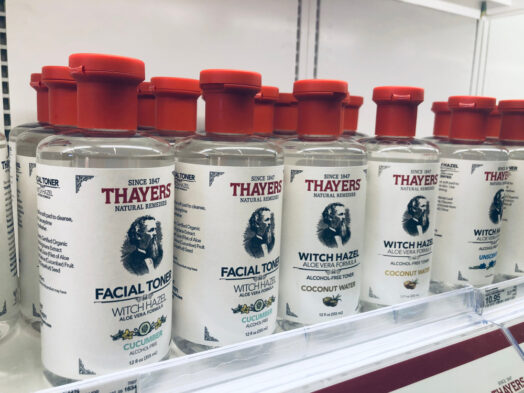 Shutterstock
Shutterstock Witch hazel is most commonly used as a toner, meaning you’ll apply it after cleansing to rebalance your skin’s pH.
Following that, make sure you’re applying moisturiser because witch hazel can dry out your skin.
In terms of how often should you use witch hazel, we recommend only 2-3 times a week and if you have sensitive skin it’s best to use witch hazel mixed with aloe or rose water, or introduce it gradually.
Elsewhere, if you have acne-prone skin you’ll want to look for products where witch hazel is mixed with salicylic acid or glycolic acid to maximise the impact.
When it comes to treating itching, pain or swelling (inflammation), insect bites, and acne you also have the option of applying witch hazel directly to your skin, to target a specific problem area. If you’re using witch hazel for your bikini line then swipe a cotton wool ball soaked in witch hazel over your freshly shaved skin to keep it calm and bump-free.
If you have dry or extremely sensitive skin you may wish to avoid using witch hazel, or at least use it sparingly to begin with because it’s more likely to cause you irritation.
FURTHER READING: Do you have dry skin or is just dehydrated? Here’s how to tell the difference
If you’re looking to get started with witch hazel, we’ve picked some of the best products to suit different skin types and budgets. The majority of these products are toners because they’re usually the easiest and most effective way to introduce the ingredient.
£14 | Buy now
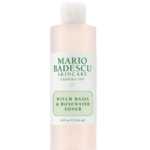 Mario Badescu
Mario Badescu This Mario Badescu spray manages to bring all the benefits of witch hazel without drying out the skin, all while minimising the chances of irritation.
This is thanks to the addition of rosewater.
Rosewater is renowned for its soothing and hydrating qualities. It helps to moisturise and revitalise the skin, which means it works to counteract the drying effects of witch hazel.
The reason this spray is a great way to introduce witch hazel to your routine is that the mist is lightweight.
You can spray as little or as much as you want and it will be gently absorbed into the skin.
£4.99 | Buy now
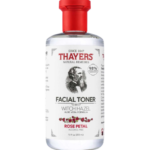 Thayers
Thayers Although the star ingredient in the Thayers Hydrating Facial Toner is witch hazel, it works so well because it combines the astringent nature of the botanical extract with the hydrating power of glycerin, rosewater, and aloe vera.
Glycerin is what’s known as a humectant.
It’s found naturally in the skin and draws moisture and locks it in place.
Aloe vera helps soothe and calm any redness or irritation caused by the witch hazel, while rosewater adds a gentle scent that also brings its own hydrating benefits.
Such is the gentle nature of this toner, you can use this like a normal toner morning and night.
Like with the Mario Badescu spray, this toner is lightweight and absorbs quickly into the skin, without leaving it feeling sticky or greasy.
£3.15 | Buy now
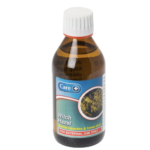 Care+
Care+ If you’re looking for a witch hazel product without any bells and whistles, we recommend the Care Witch Hazel lotion.
It’s strong, which makes it great for spot-treating problems, and it’s great at cleansing the skin by removing excess oils, impurities, and makeup.
We’ve also used this toner for insect bites.
Just be aware that because it’s such a concentrated dose of witch hazel, use this in small doses or for short periods of time to avoid damaging your skin barrier.

Kat is a freelance journalist, photographer, and the founder of Simply Gender Free – a company dedicated to smashing gender stereotypes in kids’ products. As a mum of two, Kat is passionate about making the world a better place for the next generation
